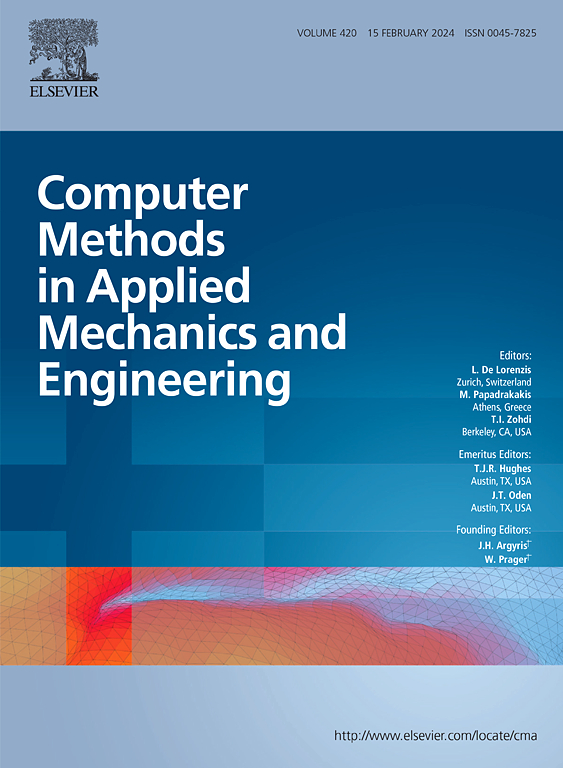On a canonical interface model with application to micro-heterogeneous elastic solids
IF 6.9
1区 工程技术
Q1 ENGINEERING, MULTIDISCIPLINARY
Computer Methods in Applied Mechanics and Engineering
Pub Date : 2025-03-22
DOI:10.1016/j.cma.2025.117925
引用次数: 0
Abstract
Finite-thickness interphases between different constituents in heterogeneous materials are often replaced by a zero-thickness interface model. Due to increasing area-to-volume ratio with decreasing size of microstructures, interfaces introduce a physical length into the effective response at the macroscale. The most commonly studied interface models are the cohesive interface model and the elastic interface model. The cohesive interface model allows for a displacement jump across the interface, in contrast to the elastic interface model that requires displacement continuity across the interface. The classical general interface model assumes that the interface displacement itself must coincide with the displacement average across the interface. The recently proposed extended general interface model defines the interface displacement kinematically via the weighted average of displacement across the interface. Here, we propose a canonical interface model based on a variationally consistent approach, which encompasses all previous interface models. We implement our model with the finite element method and illustrate its consequences through a series of numerical examples. Moreover, variationally consistent homogenization is employed to upscale an elastic composite with particles surrounded by a canonical interface and embedded in a matrix. The numerical results highlight the significance of the canonical interface model on the overall response of composites, at times leading to counter-intuitive behavior at the macroscale.
求助全文
约1分钟内获得全文
求助全文
来源期刊
CiteScore
12.70
自引率
15.30%
发文量
719
审稿时长
44 days
期刊介绍:
Computer Methods in Applied Mechanics and Engineering stands as a cornerstone in the realm of computational science and engineering. With a history spanning over five decades, the journal has been a key platform for disseminating papers on advanced mathematical modeling and numerical solutions. Interdisciplinary in nature, these contributions encompass mechanics, mathematics, computer science, and various scientific disciplines. The journal welcomes a broad range of computational methods addressing the simulation, analysis, and design of complex physical problems, making it a vital resource for researchers in the field.

 求助内容:
求助内容: 应助结果提醒方式:
应助结果提醒方式:


